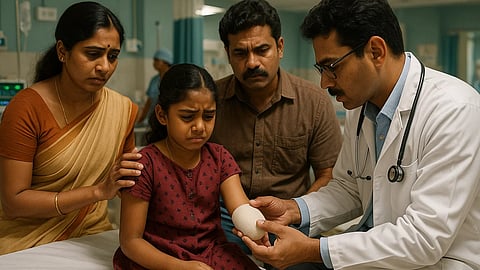Forearm fractures, particularly in children, require careful management—ensuring alignment of bones, securing stable immobilization, and periodic monitoring of blood circulation, nerve function, and swelling. In some cases, swelling or internal bleeding may compress vessels, leading to vascular compromise. If blood flow is obstructed for too long, tissues can become ischemic (lack oxygen) and necrosis (tissue death) can set in, necessitating surgical intervention or even amputation.
Doppler ultrasonography is a common noninvasive tool to assess arterial flow; when it reveals vessel blockage, urgent surgical evaluation is critical. Delays in identifying vascular injury or compartment syndrome (increased pressure in a closed muscle compartment) are recognized clinical risks.
In this case, the timeline suggests a delay in detecting vascular compromise. Whether the delay was avoidable depends on whether warning signs (pain out of proportion to injury, increasing swelling, change in skin color) were present and appropriately acted on.
(Rh/Eth/TL)


